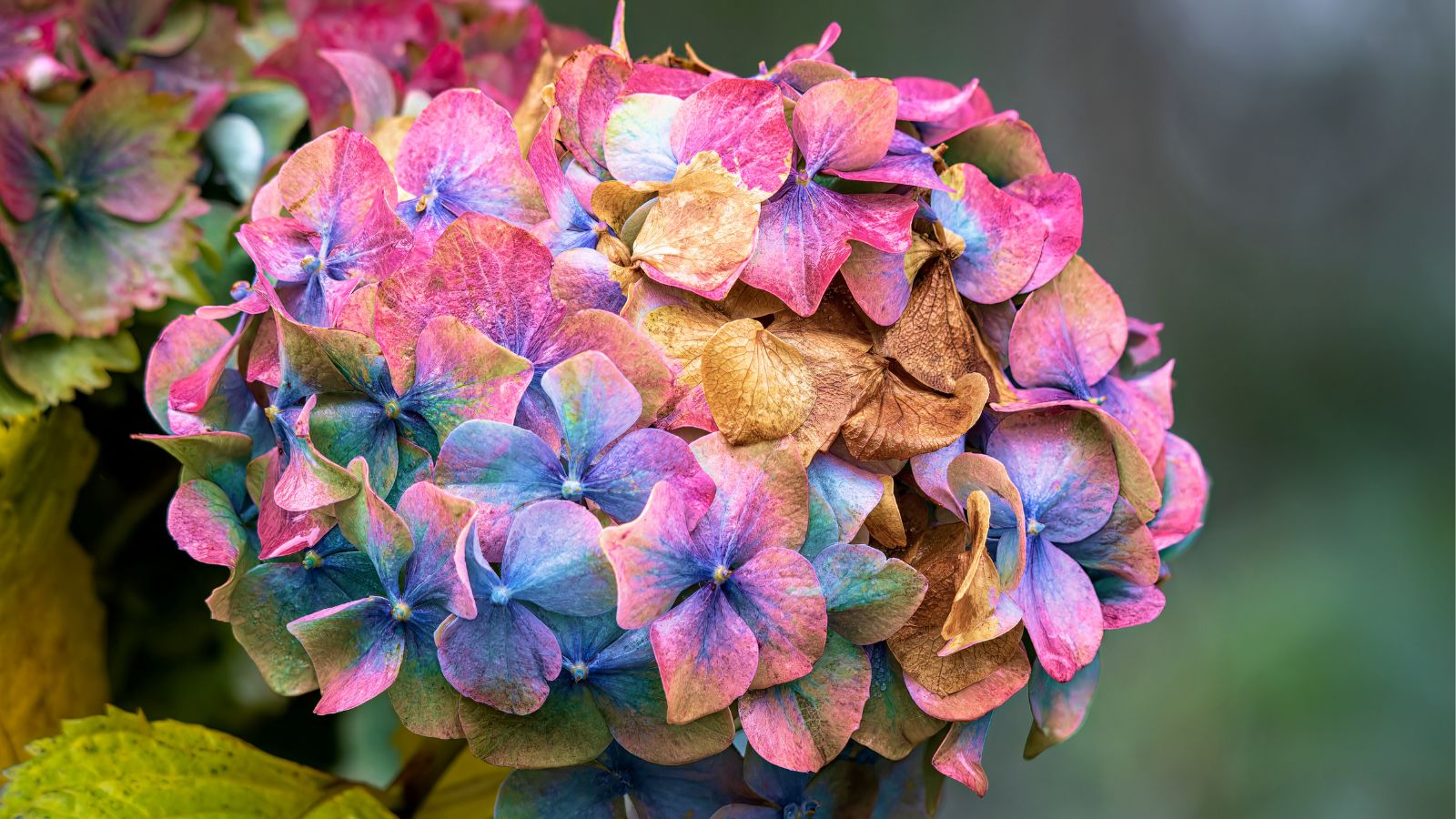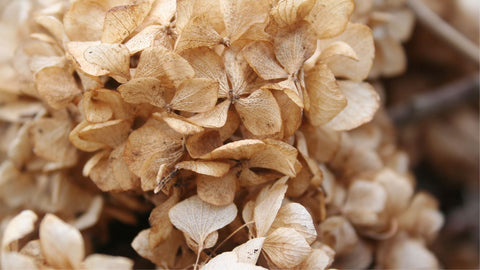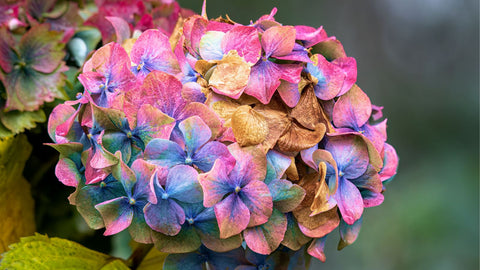7 Reasons Why Your Hydrangea Leaves Are Turning Brown
•Posted on April 26 2024

Hydrangeas are beloved for their stunning blooms and lush foliage, but encountering brown leaves on these plants can be distressing for any gardener.
If you've noticed your hydrangea's leaves turning brown, curling, or developing brown edges, fear not!
In this comprehensive guide, we'll delve into the various reasons behind this issue and provide you with actionable solutions to revive your hydrangea's health.
Recommended for You:

What is a Hydrangea?

Hydrangeas are deciduous shrubs or climbing vines that belong to the Hydrangeaceae family.
Renowned for their large, showy flower heads and vibrant colors, hydrangeas are popular ornamental plants in gardens and landscapes worldwide.
These versatile plants thrive in diverse climates and are prized for their ability to brighten up any outdoor space.
Different Types of Hydrangeas:
There are several types of hydrangeas, each with its unique characteristics and growing requirements:
-
Bigleaf Hydrangea (Hydrangea macrophylla): Known for their large, mophead or lacecap flower clusters, bigleaf hydrangeas are perhaps the most recognizable type. They come in various colors, including blue, pink, and purple, depending on soil pH.
-
Panicle Hydrangea (Hydrangea paniculata): Panicle hydrangeas feature cone-shaped flower clusters that often start off white and gradually turn pink or even deep red as they mature. These hardy hydrangeas are prized for their resilience and ability to thrive in different soil conditions.
-
Smooth Hydrangea (Hydrangea arborescens): As the name suggests, smooth hydrangeas have smooth, broad leaves and produce rounded flower clusters. The popular 'Annabelle' cultivar falls into this category, known for its large, white blooms.
-
Oakleaf Hydrangea (Hydrangea quercifolia): Named for its oak-shaped leaves, this type of hydrangea boasts stunning foliage that turns vibrant shades of red, orange, and purple in the fall. Its flower clusters are typically white and cone-shaped.
Related Post: How to Naturally Reduce Your Soil pH
How to Care for a Hydrangea

Proper care is essential for ensuring your hydrangea remains healthy and vibrant. Here are some tips for maintaining your hydrangea:
-
Location: Plant your hydrangea in a location that receives partial sun to partial shade. Morning sun and afternoon shade are ideal for most varieties.
-
Soil: Hydrangeas prefer moist, well-drained soil with plenty of organic matter. Ensure the soil is consistently moist but not waterlogged, as excessive moisture can lead to root rot.
-
Watering: Water your hydrangea deeply but infrequently, aiming to keep the soil consistently moist. Avoid overhead watering, as wet foliage can promote fungal diseases.
-
Pruning: Prune your hydrangea selectively to remove dead or damaged branches and promote airflow within the plant. Avoid heavy pruning, as this can reduce flower production.
-
Fertilization: Apply a balanced fertilizer formulated for flowering shrubs in spring, just as new growth begins. Avoid fertilizers high in nitrogen, as they can promote excessive leaf growth at the expense of flowers.
Recommended for You:

What Fertilizer to Use for Hydrangeas

Choosing the right fertilizer is crucial for promoting healthy growth and abundant blooms in your hydrangeas.
Look for a balanced fertilizer with a formulation such as 10-10-10 or 12-12-12, which provides a balanced ratio of nitrogen, phosphorus, and potassium.
Additionally, consider using a fertilizer specifically designed for acid-loving plants if you're aiming to achieve blue blooms on your hydrangeas.
Apply the fertilizer according to the manufacturer's instructions, usually in spring just as new growth begins.
Why Are My Hydrangea Leaves Turning Brown?

Several factors can contribute to hydrangea leaves turning brown:
-
Water Stress: Over or under-watering can stress hydrangeas, leading to brown, crispy leaves. Ensure your hydrangea receives adequate moisture, especially during hot, dry periods.
-
Sunburn: Excessive sun exposure can cause hydrangea leaves to develop brown edges or curl. Plant your hydrangea in a location with filtered sunlight or provide afternoon shade to prevent sunburn.
-
Fungal Diseases: Hydrangeas are susceptible to fungal diseases such as powdery mildew and leaf spot, which can cause brown spots or patches on the leaves. Improve air circulation around the plant and avoid overhead watering to reduce the risk of fungal infections.
-
Nutrient Deficiency: A lack of essential nutrients, particularly nitrogen, can cause hydrangea leaves to turn brown or yellow. Ensure your hydrangea is receiving adequate fertilizer to meet its nutritional needs.
Related Post: Why Monopotassium Phosphate a Great Choice for Plant Health

What Causes Hydrangea Leaves to Curl and Turn Brown?

Hydrangea leaves may curl and turn brown due to various reasons, including:
-
Water Stress: Hydrangeas that are over or under-watered may experience leaf curling and browning. Maintain consistent soil moisture to prevent water stress.
-
Pest Infestation: Certain pests, such as aphids, spider mites, and leafrollers, can cause damage to hydrangea leaves, leading to curling, discoloration, and browning. Inspect your plants regularly and treat any pest infestations promptly.
-
Environmental Stress: Extreme temperatures, strong winds, and fluctuations in humidity can stress hydrangeas, causing their leaves to curl and brown. Protect your plants from harsh environmental conditions whenever possible.
How to Fix Brown Leaves on a Hydrangea Plant
If your hydrangea's leaves are turning brown, here are some steps you can take to address the issue:
-
Adjust Watering: Ensure your hydrangea is receiving adequate moisture by watering deeply and consistently. Mulch around the base of the plant to help retain soil moisture.
-
Provide Shade: If your hydrangea is exposed to direct sunlight, consider providing afternoon shade or relocating it to a more shaded area to prevent sunburn.
-
Prune Affected Foliage: Remove any brown or damaged leaves from your hydrangea using sharp, clean pruners. This will improve the plant's appearance and promote new growth.
-
Treat for Pests and Diseases: If pests or fungal diseases are present, treat your hydrangea with appropriate insecticides or fungicides according to the product label instructions.
Recommended for You:
Understanding why the leaves on your hydrangea are turning brown is the first step toward restoring your plant's health and vitality.
By addressing underlying issues such as water stress, sunburn, pests, and diseases, you can help your hydrangea thrive and continue to grace your garden with its beautiful blooms and foliage.
With proper care and attention, your hydrangea will reward you with years of beauty and enjoyment.
Comments
0 Comments
Leave a Comment